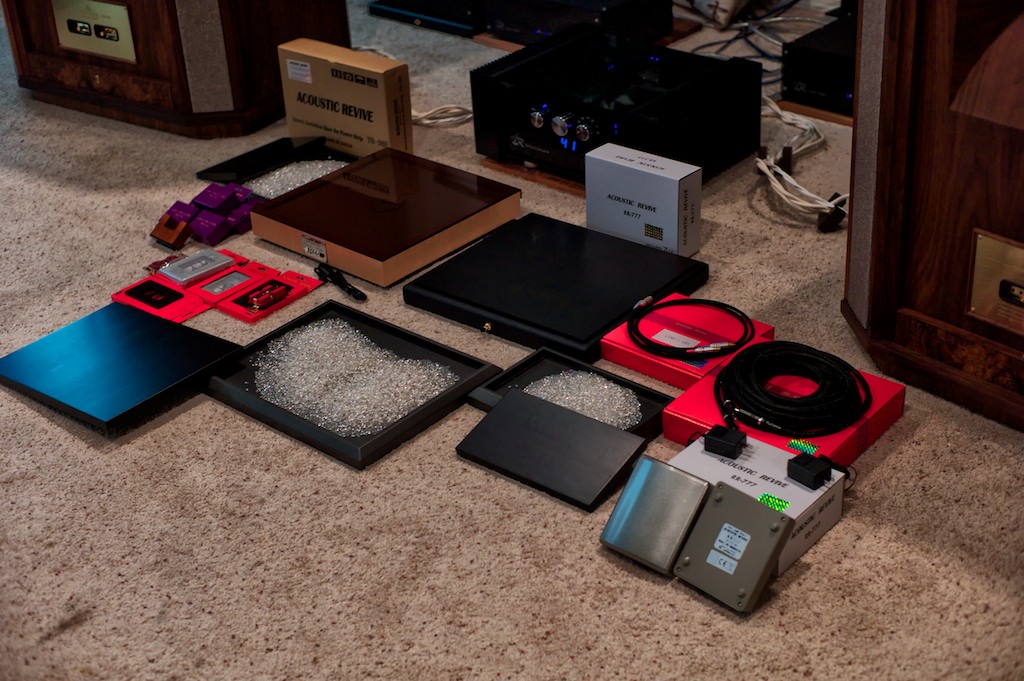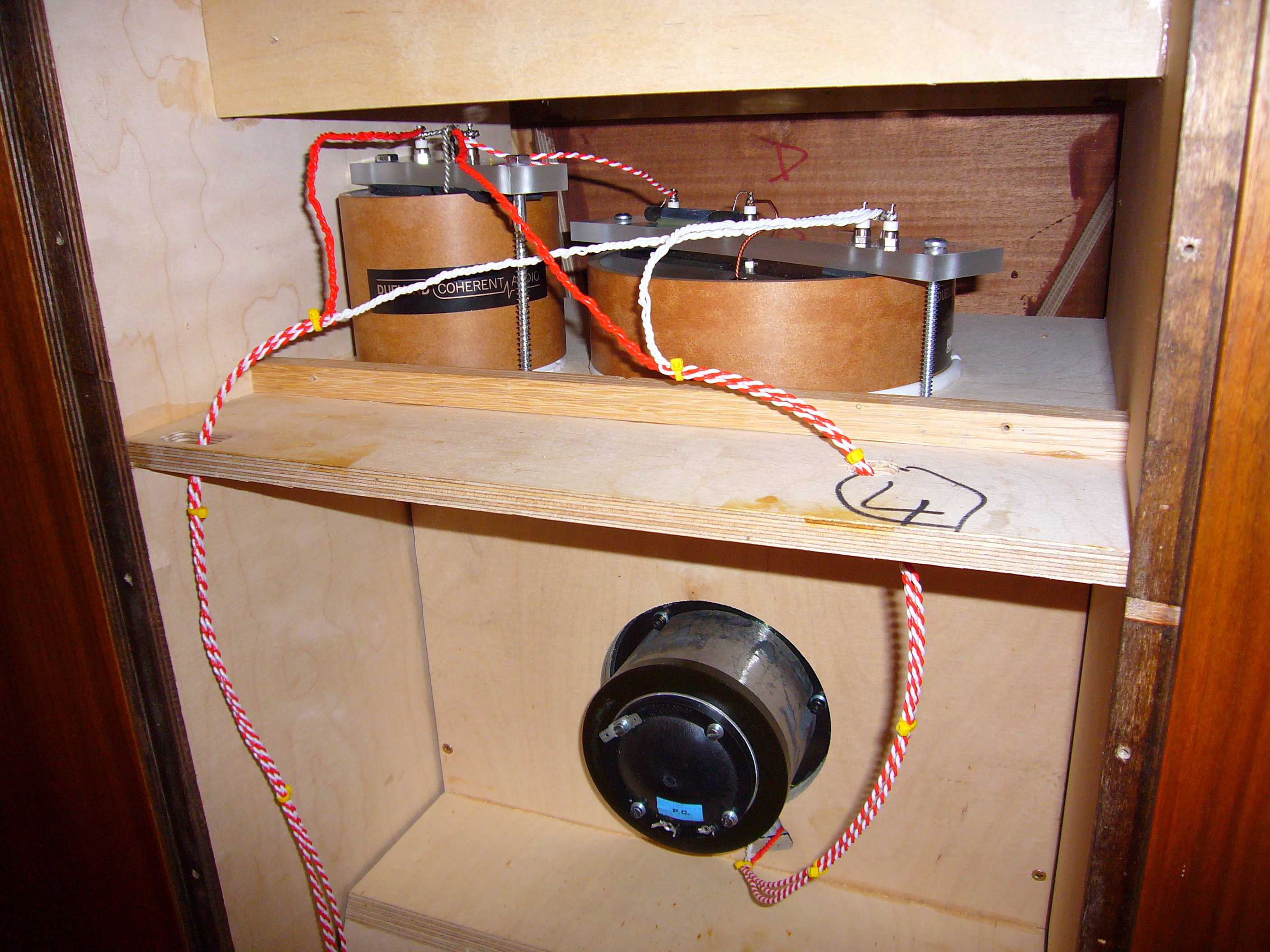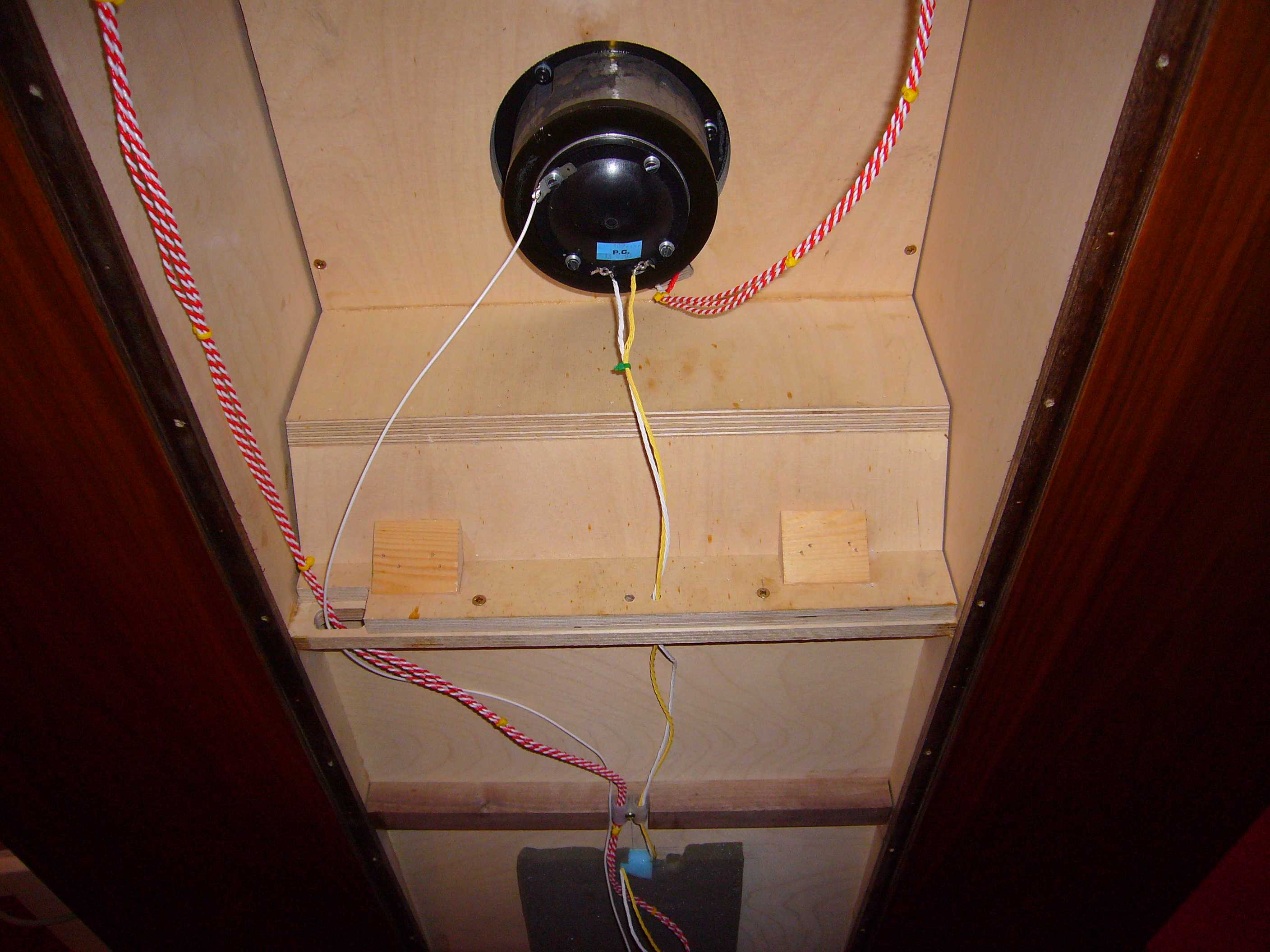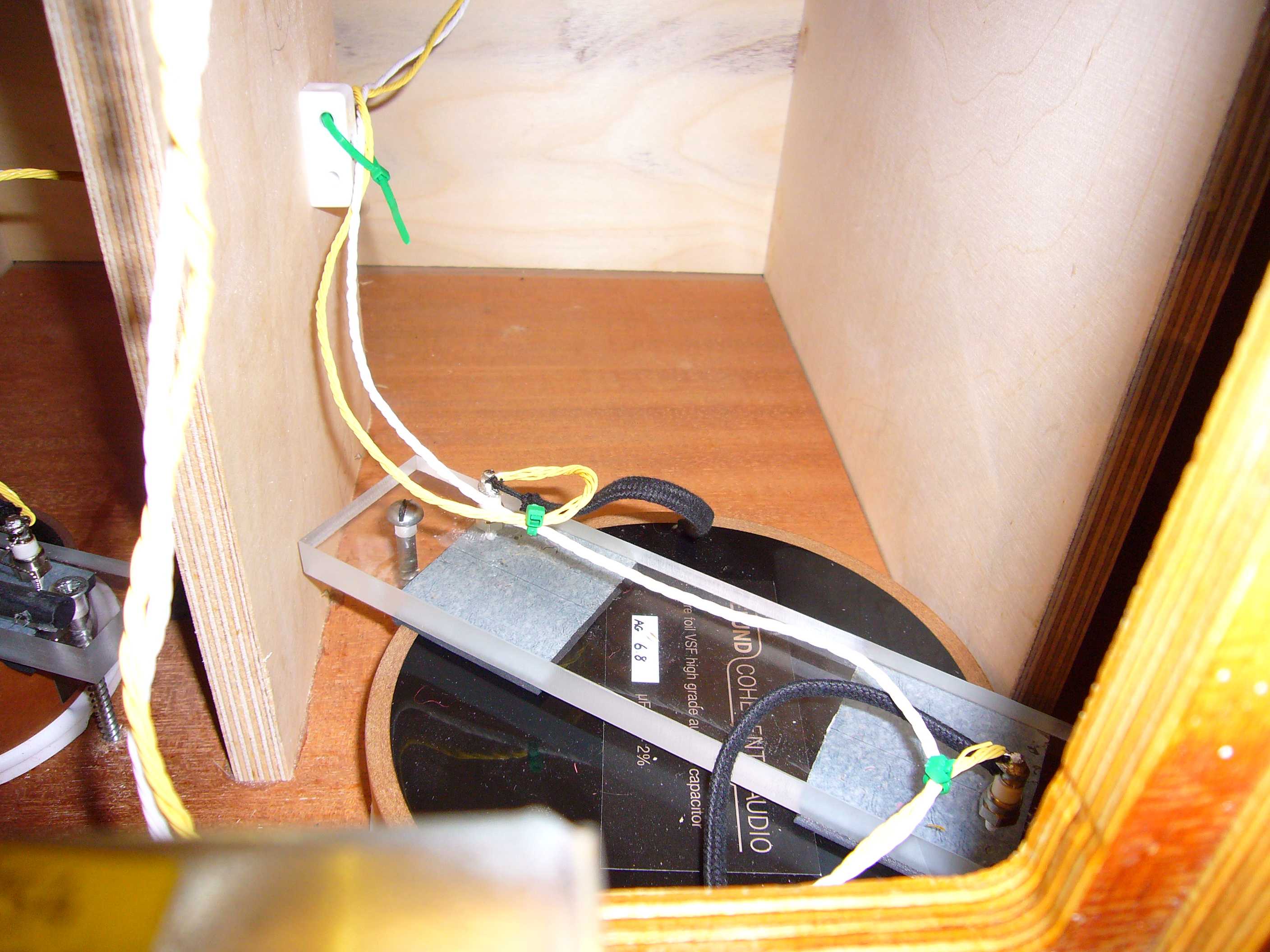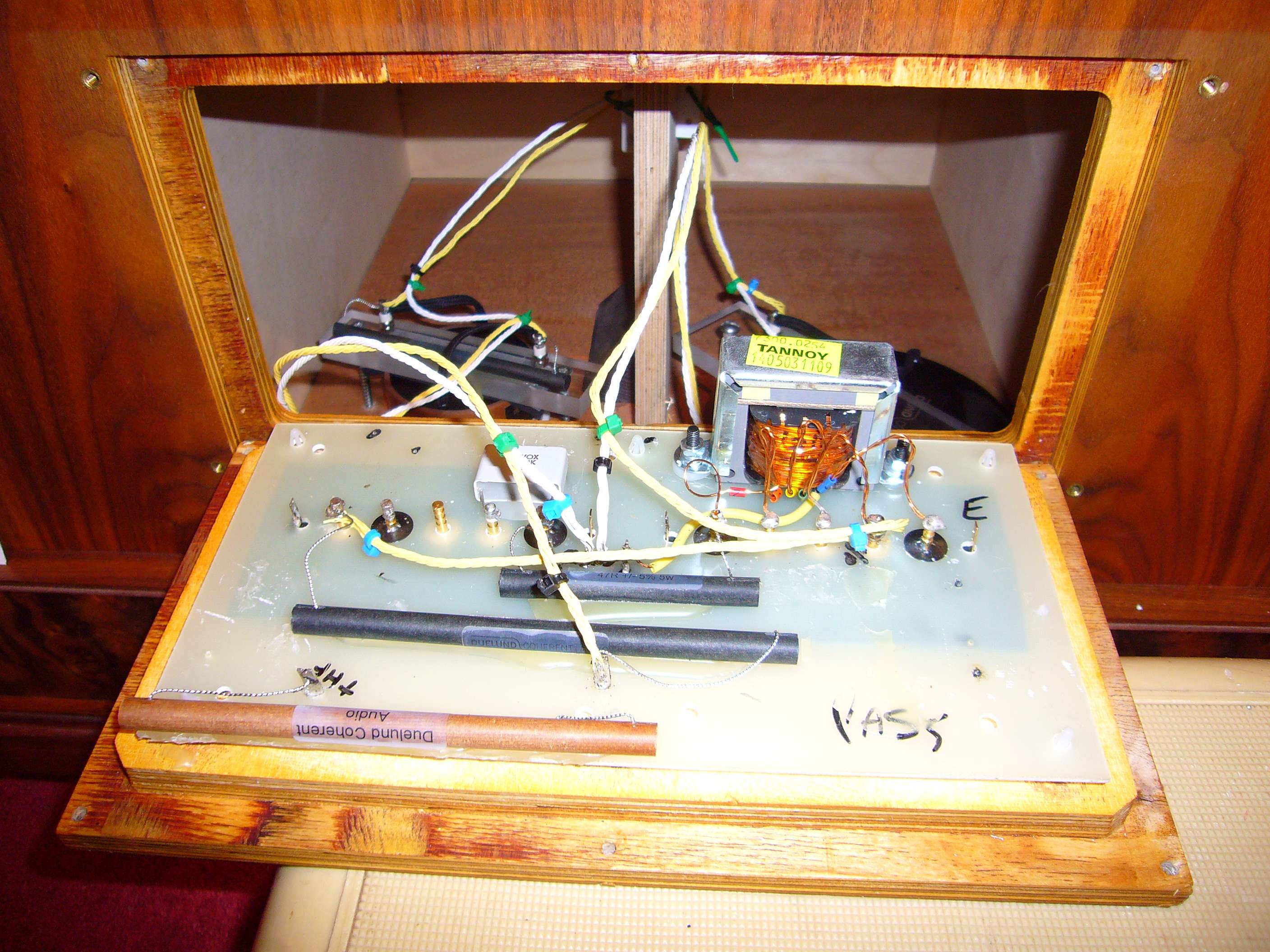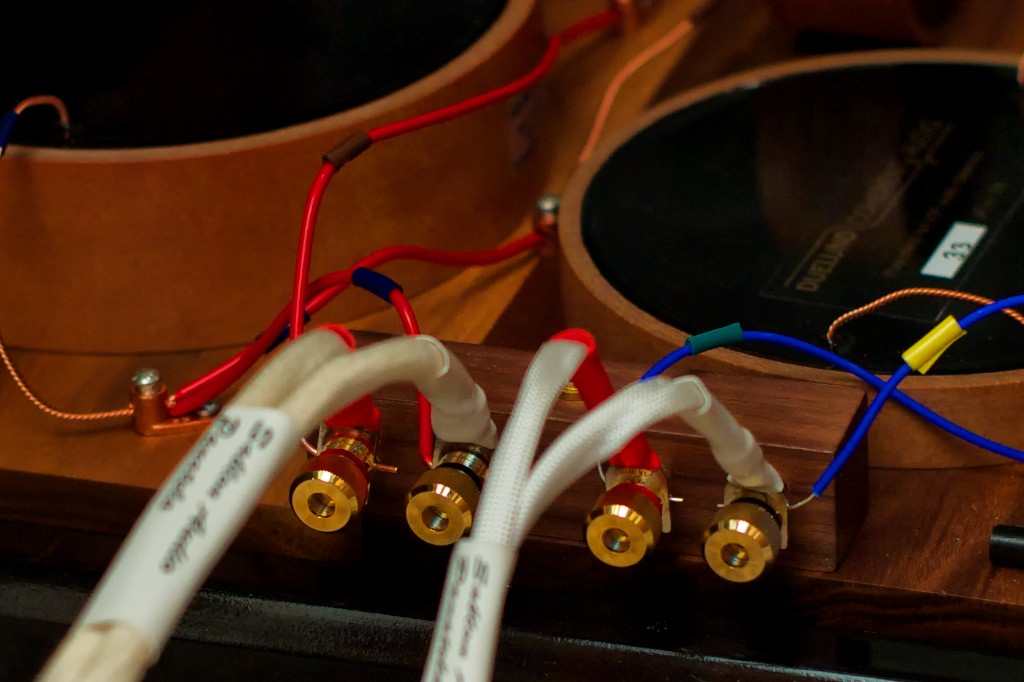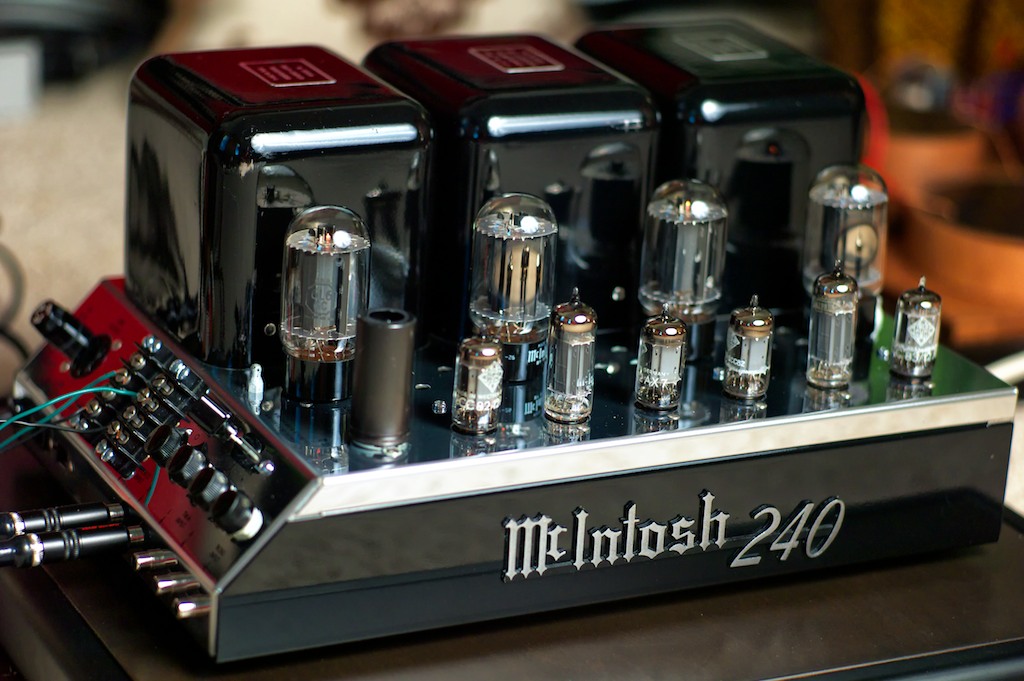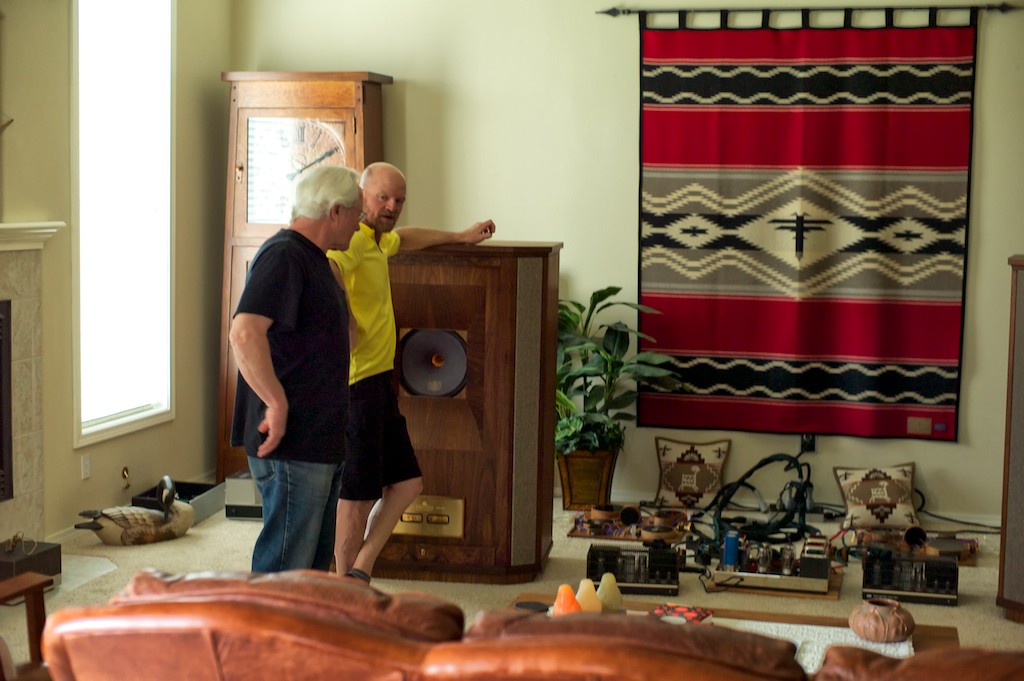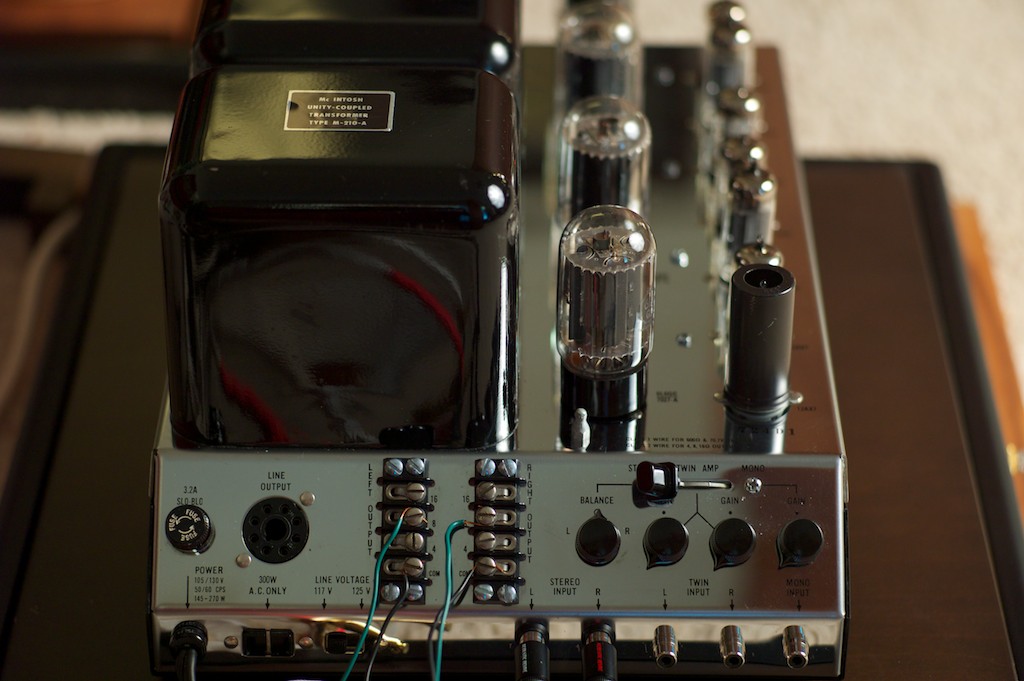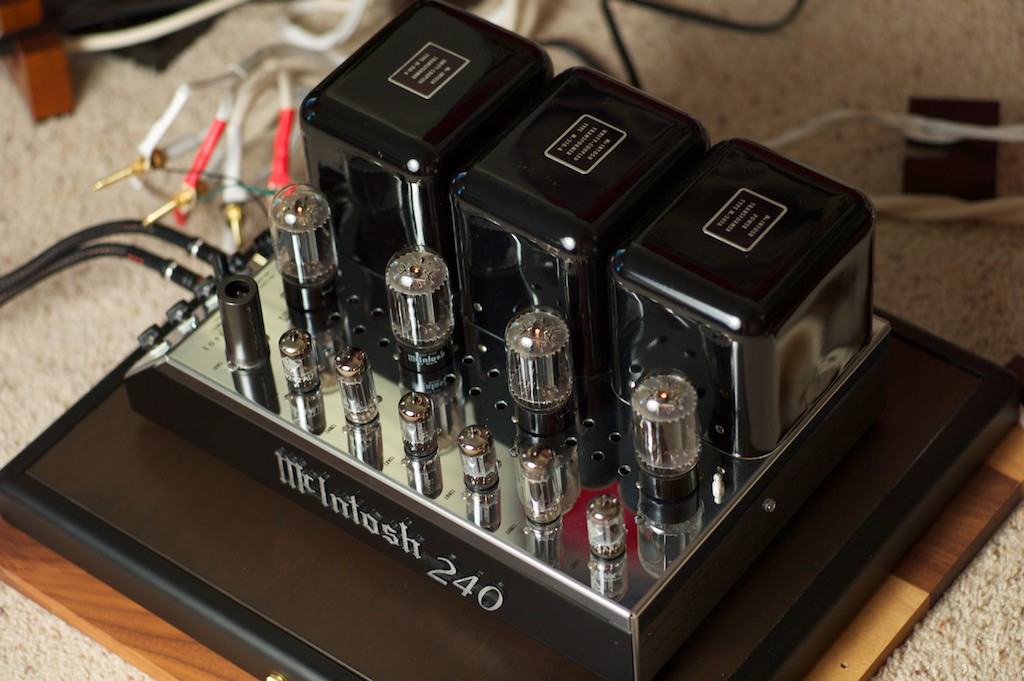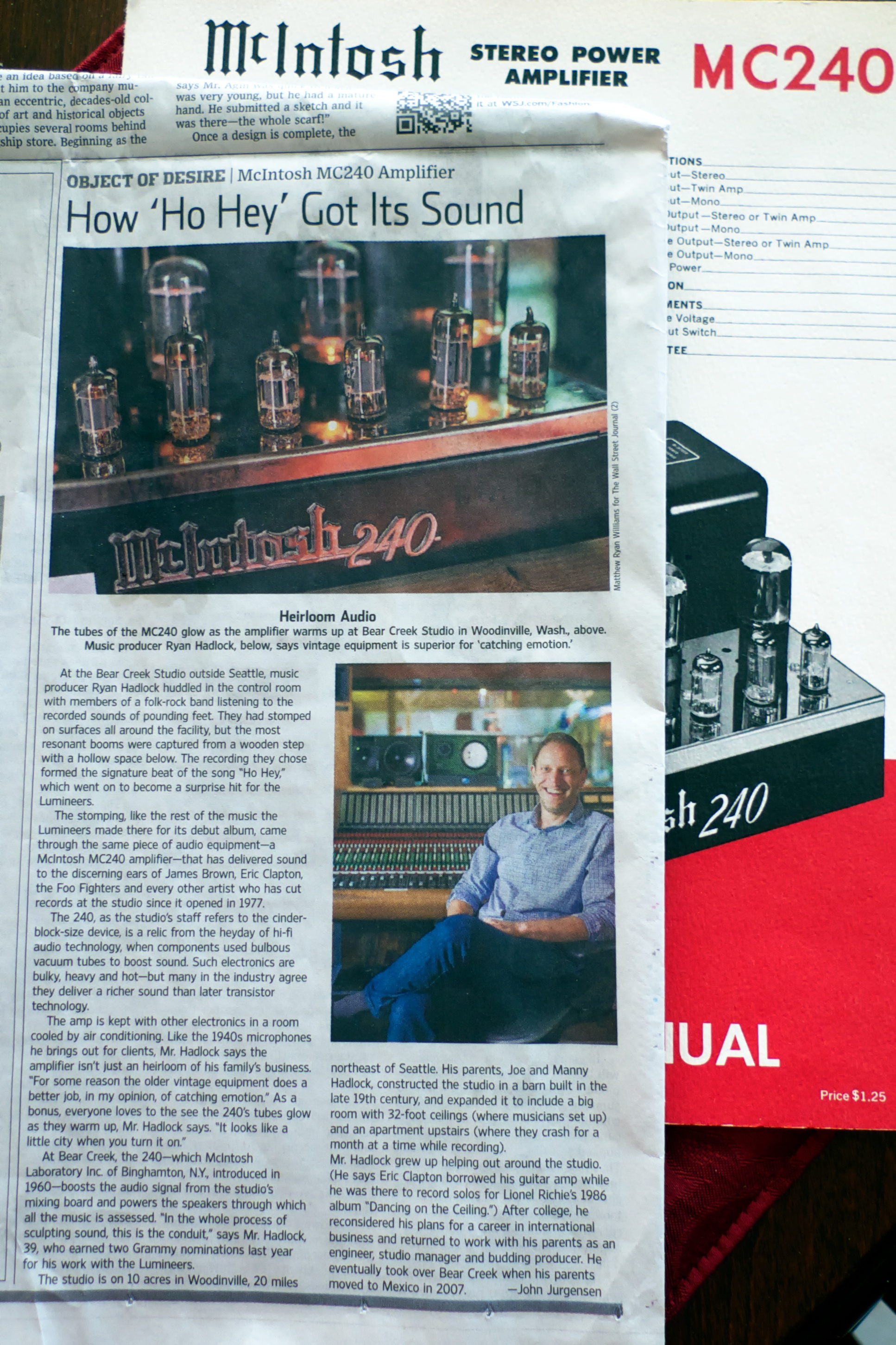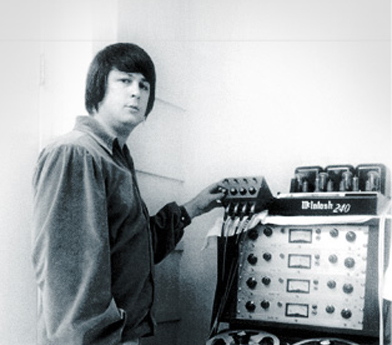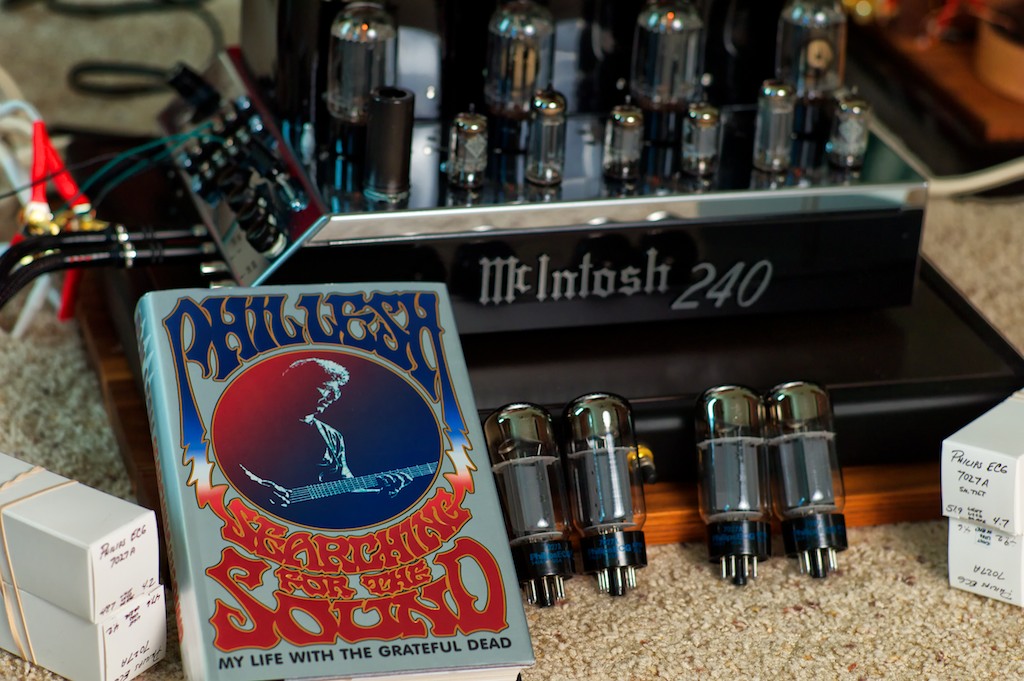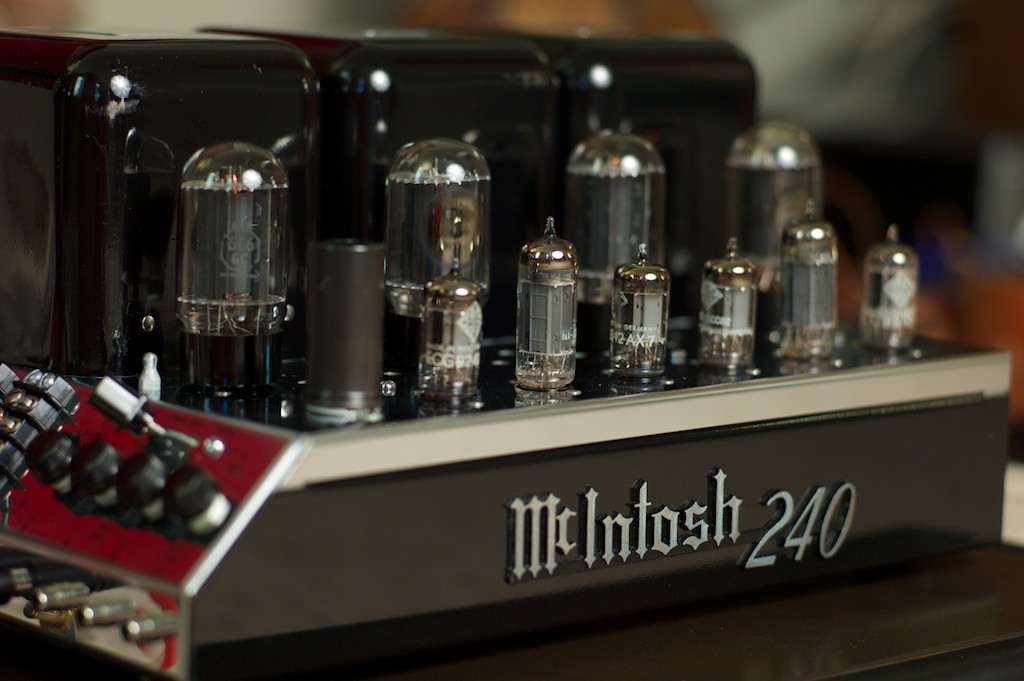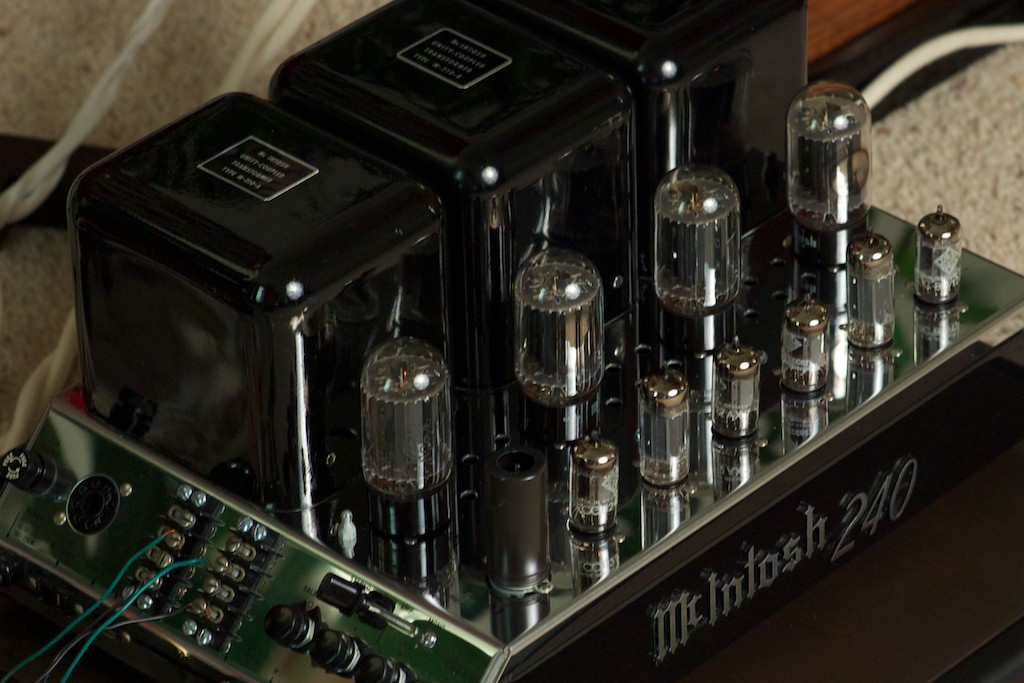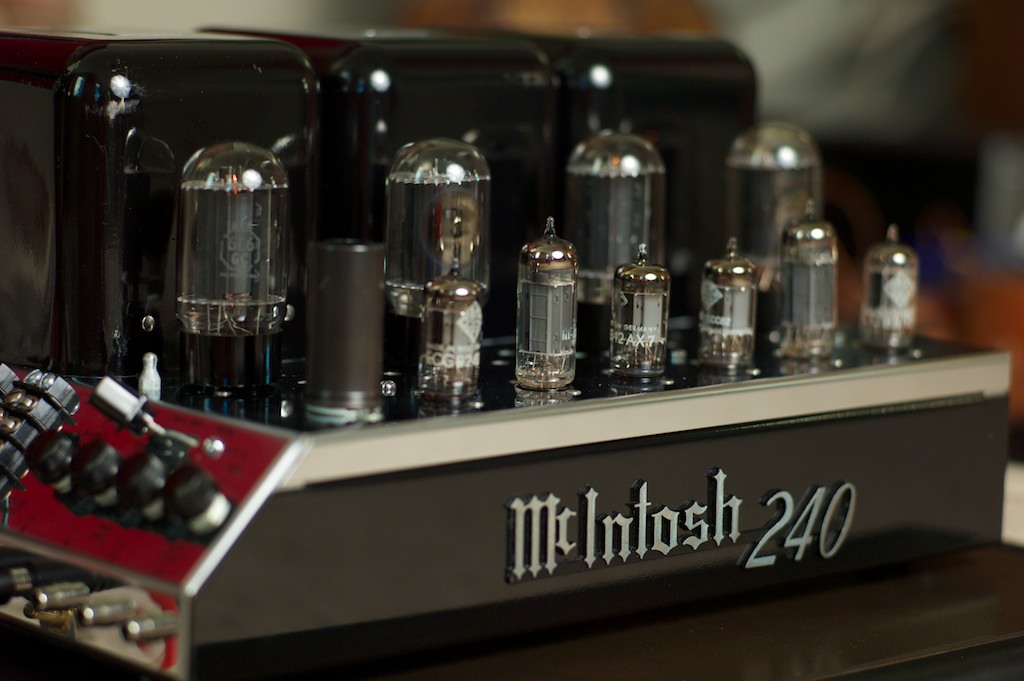Chapter 10 of the Acoustic Revive Chronicles
This weekend I am hard at work writing Chapter 10 of the Acoustic Revive Chronicles. As many of you know, I really love the Acoustic Revive audio accessories that are designed and manufactured by Mr. Ken Ishiguro in Japan. If you’ve looked closely at the photos in my reviews at Positive Feedback Online and the photos here at my Jeff's Place blog you’ve seen Acoustic Revive accessories everywhere – that’s because they work great!
In fact, I’ve spent more time writing about Acoustic Revive products than I have anything from any other company. I’ve been so impressed with the Acoustic Revive products of Mr. Ken Ishiguro I have dedicated a whole series of articles to them called The Acoustic Revive Chronicles:
Chapter 1 – RR-77 ultra-low frequency pulse generator – 6Moons (February 2008)
Chapter 2 – RIQ-5010 & RIQ-5010W Quartz Insulators and the QR-8 Quartz Resonators – 6Moons (March 2008)
Chapter 3 – RCC-24 Ground Conditioner, the SIP-8F RCA Input Shorting Plug – 6Moons (May 2008)
Chapter 4 – RPT-2 and RPT-4 Ultimate Power Distributors and the Power Reference Power Cables – Positive Feedback Online (September/October 2008)
Chapter 5 – REM-8 EMF Canceler – Positive Feedback Online (November/December 2008)
Chapter 6 – RWL-3 Acoustic Conditioner; CB-1DB Receptacle Base Plate, the CFRP-1F Carbon Fiber Outlet Plate, and the CS-F2 Outlet Stabilizer – Positive Feedback Online (March/April 2009)
Chapter 6a – Getting Top Performance From Your Digital Media: Shine Ola Optical Disc Cleaner, the Acoustic Revive RIO-5II Negative Ion Generator, and the Acoustic Revive RD-3 Disc Demagnetizer – Positive Feedback Online (September/October 2009)
Chapter 7 – Custom Series Loudspeaker Stands, the RST-38 and TB-38 Quartz Under-Boards, and the RAF-48 Air Floating Board – Positive Feedback Online (January/February 2010)
Chapter 8 – Single Core speaker cables & RCA interconnects, RCI-3 Cable Insulators (May/June 2010)
Chapter 9 – The RAS-14 AC Power Conditioner and the USB-1.0SP USB Interconnect (May/June 2011)
I’ve written ten different feature articles about Acoustic Revive products! That’s almost a book!
As I've mentioned in a previous post, I had thought I had written everything there was to write about Acoustic Revive, so I thought that The Acoustic Revive Chronicles had come to an end, so I was excited when Mr. Yoshi Hontani (exporter) and Mr. Ken Ishiguro (designer and manufacturer) sent me a whole new batch of Acoustic Revive products to write about for Positive Feedback Online. Ken San has been busy refining his past products and developing new products so there’s lots of exciting new things to tell you about in Chapter 10 of the Acoustic Revive Chronicles.
So I will be hard at work writing Chapter 10 of the Acoustic Revive Chronicles over the coming weeks. As always, I will endeavor to make Chapter 10 of the Acoustic Revive Chronicles at Positive Feedback Online an exciting article that will inform you about the performance of the Acoustic Revive products in a thorough, informative, and entertaining way. As I go through the writing and reviewing process for Positive Feedback Online I will also be writing updates for each of the Acoustic Revive products for Jeff's Place to provide you some additional information.
Stay tuned! This should be fun!
The Duelund-WRSE Project
There has been unprecedented excitement about the Duelund-WRSE Project here at Jeff's Place, and for good reason, as the Duelund components really make the Tannoys sing!
I have a new Duelund-Tannoy project to tell you about: Howard in the UK sent me some photos of his Duelund crossover’d Westminsters in his listening room (above), which he’s put together a really nice system around. Howard told me, “The speaker cable are Missing Link bi-wired – UK company cryo pure silver in PTFE jacket litz style – very revealing! The amp is on music works pure perspex (acrylic) stand – (no metal at all!). Mains re-wired with 100 amp cable straight to the equipment. Nordost Valhalla mains cables. Red carpet – we like red wine. (Me too! – Jeff). Very emotional listening experience.”
Howard has also upgraded his crossovers with Duelund components: “The other guys systems look really good and I am very impressed with the external Duelund crossover. I have a complete set of photos of the internal mods to the Westminsters. Over the years there were several phases! I removed the 300 Hz filter and have the Duelund 8 SWG cast Inductors – they are huge – but the speed of the bass is awesome. All components inside are on silicon rubber mats and fixings acrylic. Replaced binding posts with best platinum WBT posts mounted on custom acrylic panel. (above)”
"I did the first mods to my Westminsters Royals in 2005 using Mundorf caps and foil inductors. In 2007 I upgraded to the Duelund flat pack (non CAST) caps. In 2009 I upgraded to Duelund CAST caps including the expensive silver one! I originally used Duelund internal wire, but the final mods with the 8 SWG inductor and CAST resistors (everywhere) used the Mundorf wire. The Mundorf wire gives more resolution and is a bit brighter than the Duelund wire. I run the speaker with the tap below level on the energy (transformer is then in neutral - no up or down!) I have the treble on one step down on flat (bypasses one of the treble caps). The Mundorf wiring allows this setting so there is the minimum number of componemts in the circuit."
“The picture of the big Duelund inductor is half way through the mod – critical viewers might notice that there is no connection to the tweeter! That came slightly later – all connections were soldered with high percentage silver solder. The 6.8 uF capacitor in series with the tweeter is a Duelund CAST silver capacitor weighing a lot! You don’t want to know the price of these! I upgraded all resistors to the Duelund (black) cast resistors.” (below)
"I am attaching 3 more photos showing the tweeter connection ...
... a view of the expensive Duelund CAST silver cap inside the cabinet ...
... and a view of the resistors on the front tweeter network. I have by-passed all the energy / treble switches to improve performance. The tweeter wiring is mult-stranded Mundorf silver / gold!"
I asked Howard if he’d share a little with us about his listening room too: “The room was a garage initially. The floor was flattened and is solid concrete. The floor cover is acoustic foam and thick carpet. All walls 2 layers of chip board on top of 6 inches sound insulation! The room is 17 feet long by 14 feet wide. The Westminsters are on the 14 foot wall angled to form a triangle in front of the listeners. They are close to corners but bass traps and wall sound material sorts this out. I got a company specializing in studios to do all the sound panels.”
Howard, you’ve put together a fantastic system! Thank you so much for sharing what you’ve done with all of us! I've added Howard's Duelund-Westminster project to the Tannoy Systems post so be sure to check it out, and if you haven't sent me photos of your Tannoy based system yet be sure to do so!
I'll also be posting an update on my own Duelund-WRSE Project before long. I now have the entire Sablon Audio Panatela cable loom installed internally, and I'll be reporting more on that shortly. I had a bit of a mishap with one of the leads to the crossover and broke off the spade connector, so I have to do a repair to get it back to orignal condition. We audio reviewers are constantly taking things in and out of systems so mishaps like this happen more often with us than the norm. In the interim I have been using the bare wire inserted into the Duelund crossover so I can listen to music, and I must say the Panatela impresses me more now than it ever did. More to come!
The Vintage Beat - The McIntosh MC240
In an earlier Today's Fresh Catch post I told you about the arrival of my newly restored fifty-year old McIntosh MC240 stereo power amplifier. The MC240 isn't in for review in the usual sense, rather it is a personal purchase that resulted from the good influence of my friend Ron (below left, that's my biking & Hi-Fi buddy, Chad, on the right), who brought over some vintage amps from his collection for some Hi-Fi fun & games listening sessions, that I wrote about here.
Ever since the departure of the ASR Emitter II Exclusive Version Blue amplifier I think I have been borderline depressed. The Emitter II Exclusive Version Blue was so musically satisfying to listen to that its departure left me feeling blue because I couldn't afford to buy it, and boy did I want to!
Sometimes it sucks being a working class bloke!
Well along came Ron with his musical vintage kit and he gave me hope that true vintage musicality could be in financial reach even for me, so I went to work doing a little research on vintage amplifiers. There's lots of good vintage kit out there, and it was fun reading all about it. Some vintage kit has become extraordinarily expensive and rare, like some of the Marantz gear, so that was screened out because I couldn't afford it.
In an incident of complete serendipity, in my morning Wall Street Journal that the paperboy dropped off on Thursday, May 23, 2013, and while drinking a cup of coffee, I was delighted to come across and read in the Style & Travel section an article entitled "Object of Desire | McIntosh MC240 Amplifier | How 'Ho Hey' Got Its Sound". (you can click on the photo below to make it bigger so its easy to read)
The WSJ article was about music producer Ryan Hadlock from Bear Creek Studio in Woodinville, Washington, with Ryan describing how "vintage equipment is superior for 'catching emotion.'" The article goes on to say "... a McIntosh MC240 amplifier - that has delivered sound to the discerning ears of James Brown, Erick Clapton, the Foo Fighters and every other artist who has cut records at the studio since it opened in 1977."
That got my attention. The more I read the more I became intrigued with vintage McIntosh Hi-Fi electronics like the MC240. I also noted that the MC240 was used by Brian Wilson of the Beach Boys to master the album Pet Sounds, one of the most significant albums in Rock & Roll history.
Also, mastering engineer Steve Hoffman is quite fond of the McIntosh MC240, and recently lamented on Facebook that he wished he still had his MC240. As I mentioned in a previous post, I read out on the Steve Hoffman Music Forum a post about how the Grateful Dead really liked using the MC240 amplifiers in their living room system:
“I thought this information from Phil Lesh’s new book “Searching for the Sound” would be of interest to Grateful Dead and McIntosh enthusiasts. This excerpt describes their Los Angeles housing in 1966. Per Phil Lesh:
“The equipment was set up in the living room: the ‘lead sled’ of Mac amps (four McIntosh 240 stereo tube amps running mono, one for each electric instrument – two guitars, bass, and keyboard – bolted onto a single sheet of two-inch plywood), the Altec “Voice of the Theater” speakers (huge woofer and horn combo speakers, four in all, one for each amp), and all the drums and instruments. The volume level of this gear was enough to bulge out the sides of the house when we cranked it.”"
I was so intrigued I got a copy of Phil Lesh's book Searching for the Sound - My Life with the Grateful Dead. It should be a good read!
While vintage Mac gear is getting rarer and more expensive all the time, it is - at least for the time being - still available for a relatively accessible price. I bought my restored 'mint' MC240 for $5000 USD from Tom Manley at McIntosh Home Audio in Knoxville, Tennessee, USA, who specializes in vintage and pre-owned McIntosh audio gear. My vintage McIntosh MC240 was restored and fine-tuned by Terry DeWick who works in cooperation with Tom on the vintage Mac gear, and who is known for his excellent restoration work.
Just so you know, the Mac equipment listed on Tom's web page is not up to date (even though it says it is), and I know a number of the items listed are sold and gone, so the only way to find out what he really has in stock is to call him. If you email Tom be patient, because Tom is relatively slow to answer emails. You're better off calling, and Tom is fun to talk to, so that's your reward.
I also put a deposit on a very special mint+ vintage McIntosh MX110Z vacuum tube stereo FM tuner / preamplifier from the 1960s from Tom, and it will be lovingly restored and fine-tuned by Tom and Terry DeWick over the coming months. It should be ready towards the end of August. Tom doesn't have a pair now, but I also put my name on a waiting list for the next MC30 mono amplifiers Tom gets, which is an older Mac amplifier than even the MC240, and putting out about 30 watts per channel.
I'm new to the vintage world of Hi-Fi gear, so I will share my experiences along the way so those of you who are thinking about venturing into vintage waters will have a little better idea of what to expect. For example: You'll note that when you look at vintage gear that it will be described as near mint, mint, or mint plus, and so forth. The amp I bought from Tom was described as 'mint' and I expected that it would look like a relatively new amplifier. Wrong.
While it is a lovely example of a McIntosh MC240 it does not look like a new amplifier out of the box, like I was expecting it to being described as 'mint.' Rather it had some 'brassing' on top of the transformer covers. ('Brassing' is a term Leica M camera owners use to describe the lacquer finish on the cameras wearing thin due to handling over time, revealing the brass chassis of the Leica underneath. It is not considered a negative aspect, but rather is endearing and the mark of a well loved and often used Leica camera.) You can only barely see this in the photos. There's also an odd light scratch or scuff here and there, but overall, this is a really nice example of an MC240. Just be forewarned that 'mint' doesn't mean 'like new'. Which, I suppose, would explain the 'mint+' description of the McIntosh MX110Z vacuum tube stereo FM tuner / preamplifier that I have a deposit on. It's nicer than 'mint'. I can't wait to give it a listen!
Make no mistake, I am thrilled with my new McIntosh MC240! By mentioning this I'm just trying to give you realistic expectations of the vintage experience, after all, like your fifty-something year-old audio writer, the Mac MC240 is a fifty-something year-old amplifier, and I know I've accumulated a little wear & tear along the way too!
The MC240 is part of a rich audio heritage that includes use by musicians as notable as Brian Wilson and the Grateful Dead, by mastering engineers like Steve Hoffman and Ryan Hadlock, and by a multitude of music lovers listening to their cherished Hi-Fi systems.
You can now add me to that list, because I am really, really, impressed with I'm hearing from the McIntosh MC240. Its sonically superb, its musically superb, and its extremely emotionally engaging.
While I'm still getting my bearings with the MC240 in listening sessions, I think its easily one of the best amplifiers I've ever heard. In fact it appears to be in the same league of performance as the ASR Emitter II Exclusive Version Blue amplifier that so impressed me, which is amazing to me! So now I'm not feeling quite as blue as I was after the departure of the Blue!
More to come!
Thanks for stopping by!




